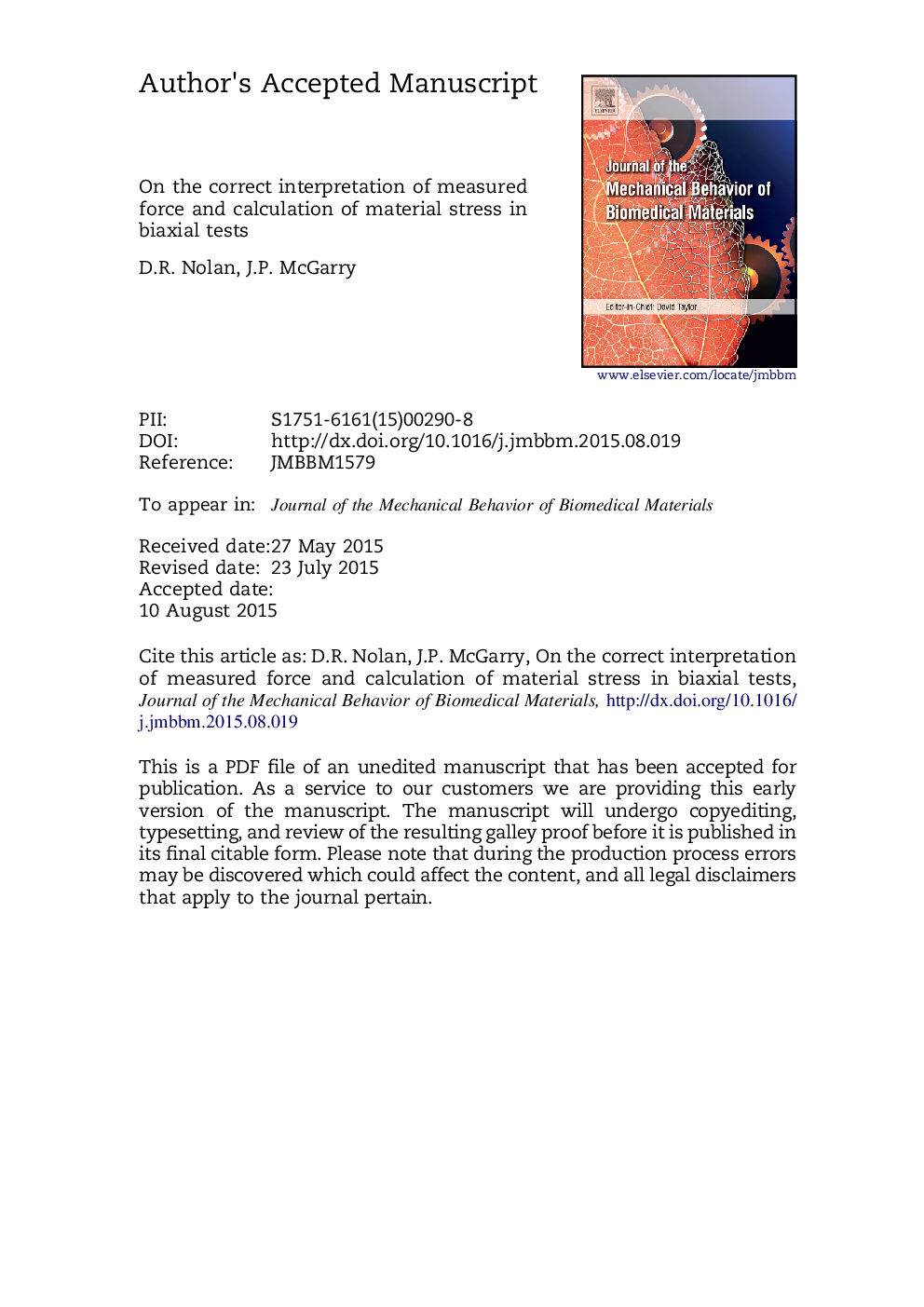| Article ID | Journal | Published Year | Pages | File Type |
|---|---|---|---|---|
| 7208324 | Journal of the Mechanical Behavior of Biomedical Materials | 2016 | 39 Pages |
Abstract
Biaxial tests are commonly used to investigate the mechanical behaviour of soft biological tissues and polymers. In the current paper we uncover a fundamental problem associated with the calculation of material stress from measured force in standard biaxial tests. In addition to measured forces, localised unmeasured shear forces also occur at the clamps and the inability to quantify such forces has significant implications for the calculation of material stress from simplified force-equilibrium relationships. Unmeasured shear forces are shown to arise due to two distinct competing contributions: (1) negative shear force due to stretching of the orthogonal clamp, and (2) positive shear force as a result of material Poisson-effect. The clamp shear force is highly dependent on the specimen geometry and the clamp displacement ratio, as consequently, is the measured force-stress relationship. Additionally in this study we demonstrate that commonly accepted formulae for the estimation of material stress in the central region of a cruciform specimen are highly inaccurate. A reliable empirical correction factor for the general case of isotropic materials must be a function of specimen geometry and the biaxial clamp displacement ratio. Finally we demonstrate that a correction factor for the general case of non-linear anisotropic materials is not feasible and we suggest the use of inverse finite element analysis as a practical means of interpreting experimental data for such complex materials.
Related Topics
Physical Sciences and Engineering
Engineering
Biomedical Engineering
Authors
D.R. Nolan, J.P. McGarry,
